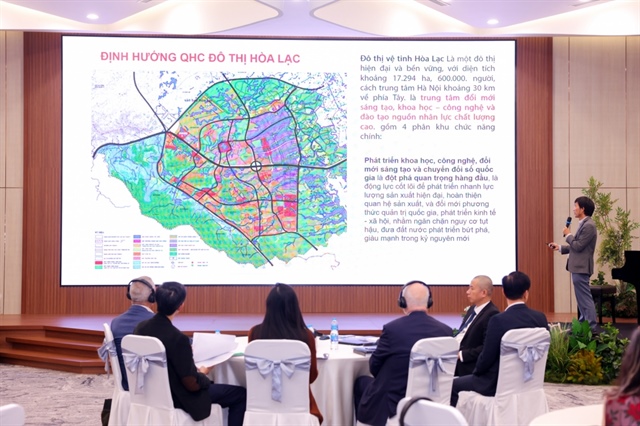Apartment proposal draws mixed reactions
Apartment proposal draws mixed reactions
The construction ministry is drafting a circular about the classification of apartment buildings, which is drawing mixed opinions from both experts and developers.

According to the draft circular, apartment buildings that were put into use from the beginning of July 2015 would be classified into A, B and C.
The ministry's housing and real estate market management department said the classification would be based on four criteria.
These four criteria are planning and architecture (which includes connectivity to school, hospital, public transport and park, besides surrounding landscape and area); technical and social infrastructure (which include fire prevention system, water supply, elevator capacity and parking space, besides lighting system); apartment quality (which includes quality of construction and equipment); and management service quality (which includes security, facilities and operational quality).
Class A will include starred apartment buildings that score 90 to 100 points; Class B will have apartments with scores from 80 to below 90 points; and Class C will have apartments that score below 80 points but are complying with the existing standards.
The draft circular said the classification would be implemented by provincial and municipal departments of construction.
The "stars" would be reviewed every five years, the draft said.
The draft is attracting mixed reactions.
Tran Duc Phuong, director of the Nam Tien Real Estate Company, said the classification of apartment buildings was necessary, as it would help prevent investors from exaggerating the quality of their projects.
Similarly, Nguyen Xuan Quang, chairman of the Nam Long Real Estate Company, said the criteria for apartment classification were in line with international practices and would contribute to cleaning up the property market, in which project quality was a vague factor.
"However, it is important to have measures to prevent shady behaviour during the classification of apartment buildings," Quang said, adding that an independent organisation should be founded to verify the set of criteria and classification.
Le Hoang Chau, president of the HCM City Real Estate Association, said the draft must clarify standards for high-end apartment buildings. Currently, many investors classify their projects as high-end units to push up prices, even though the classification is not justified.
Chau said the draft proposal still had unclear and impractical regulations, such as specifying the minimum area of high-end apartments as 60sq.m, which needed to be revised.
Nguyen Dang Son, deputy director of the Institute of Urban Research and Infrastructure Development, said the classification of apartment buildings should be done only for evaluation of quality that follows common standards as recommendations to home buyers.
Son said the prices should be decided by the market's supply and demand law, while service quality should be negotiated between the operators and the clients.
The classification regulations must be strict to prevent investors from lobbying to get higher classifications for their projects to push up prices to an unreasonable level.
Nguyen Trong Ninh, director of the Housing and Real Estate Market Management Department, said the draft proposal was expected to be issued at the beginning of the second quarter of this year. The draft proposals were incomplete and needed to be improved, Ninh said.
He said the classification of apartment buildings could be optional, adding that if developers needed to get a star classification for their projects, they could register for classification.



















